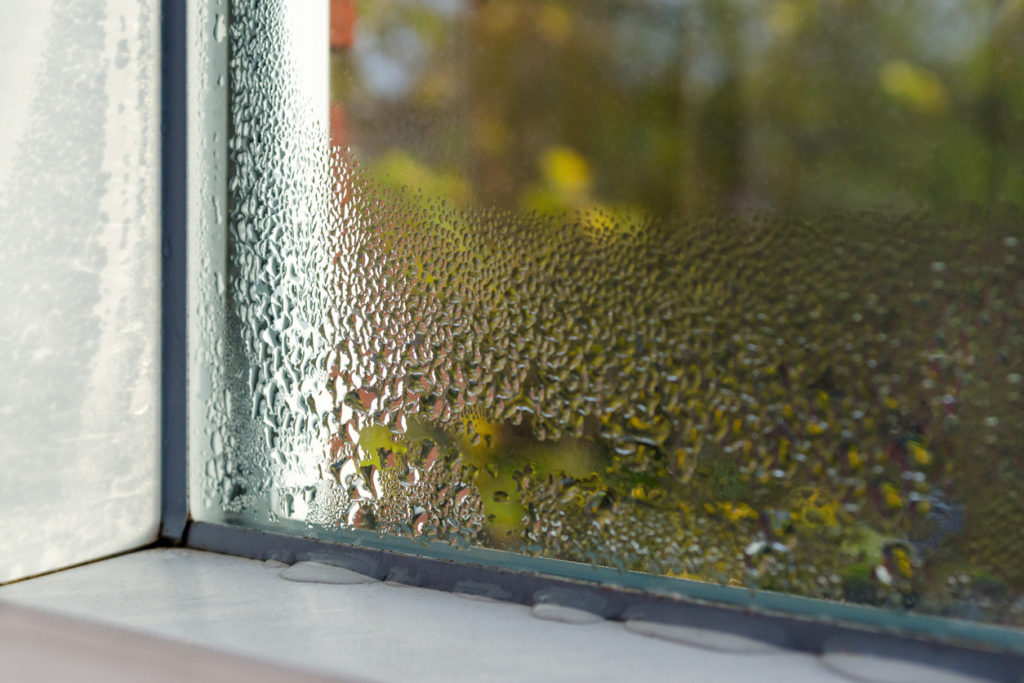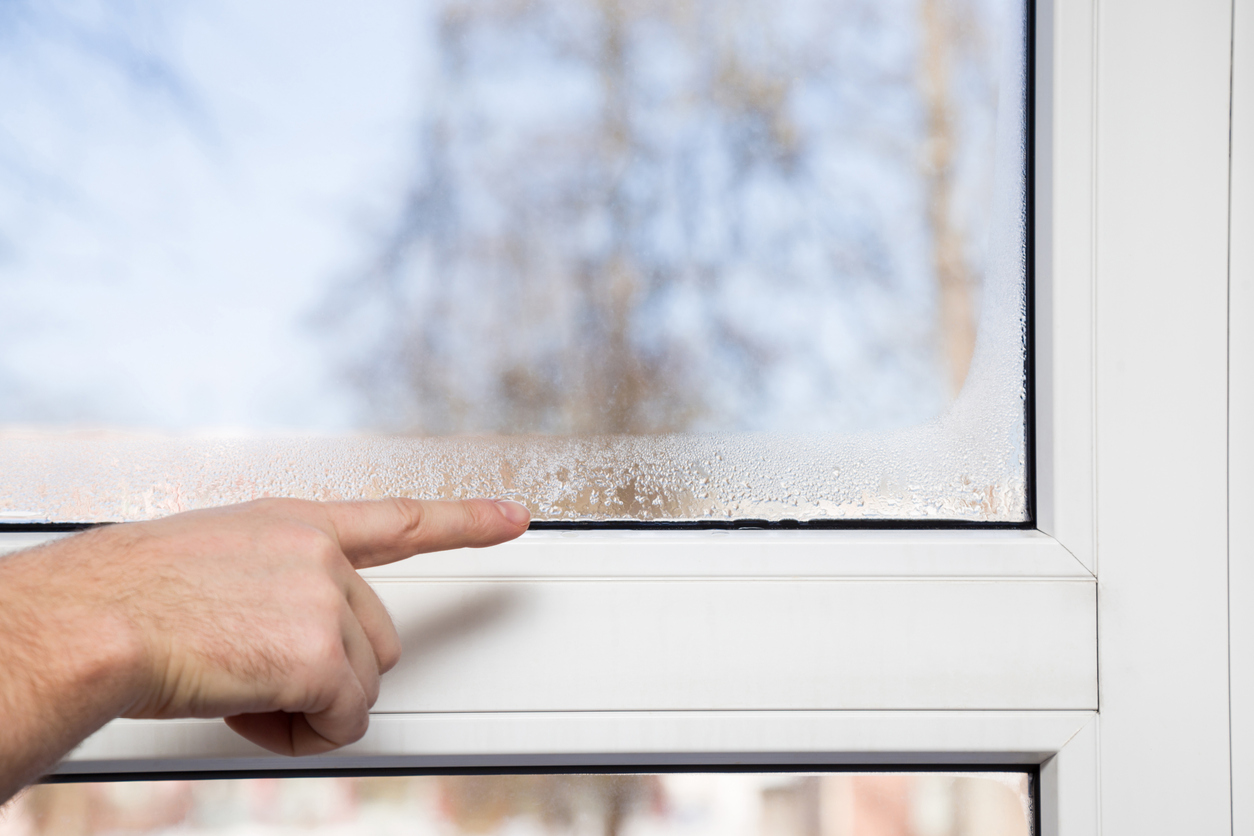
Window condensation can be a tricky household annoyance. However, small amounts of excess moisture is normal in most households, especially if windows have a proper seal.
To answer what’s normal and what isn’t with condensation, especially condensation on windows and around the window frame, it’s important to both understand what causes window condensation and when it is normal. In fact, improperly installed, broken, or old windows can cause less condensation because of leaks, which allows humidity to escape the home through the window. This is a frequent concern when homeowners receive new windows and suddenly experience condensation when they did not with their old windows. Simply put, the old windows were allowing air to escape, while the new windows are better insulated and have an air-tight seal, keeping indoor humidity and air from escaping.
What causes condensation?
As previously described, window condensation is the extra moisture that forms due to humidity. Indoor condensation is from indoor humidity and outdoor condensation is from natural dew that forms. Whether you are experiencing a warm, humid summer, extreme temperature changes that frequent the North Texas region, or even remodeling the home, small amounts of condensation are completely normal. It’s impossible to fully control the water or environment inside or outside of your house, therefore excess condensation on the window’s glass itself is not something that you should typically worry about.
Similarly, if you notice moisture developing in your kitchen or bathroom, then it is likely due to the water released in the air by cooking or showering. Sometimes, homes will have poor ventilation and excess humidity in these rooms which can then lead to condensation developing. Again, if you notice very small amounts, then you may want to add a de-moisturizer or a couple of fans in order to circulate the warm air. Overall, it’s nearly impossible to completely avoid any moisture building up, but you should be wary in case more develops.

In a similar sense, small amounts of moisture is important to keep in your house to benefit your comfort and health. If you completely strip your house of all moisture, then you may notice a number of, albeit minor, consequences developing such as dry skin. That said, excess condensation becomes a problem if you begin to notice structural damage, paint issues or fading, mold developing, and even the decay of your house. If you begin to notice any of these issues arising, then the amount of condensation is not normal and can become dangerous.
When excess moisture is not normal:
- If Condensation continues to sit on your walls, then you may not have enough indoor circulation.
- The smell of musty odors.
- Observation of mildew or mold.
- Peeling wallpaper, blistering paint, or wall discoloration.
The above household issues are indicators that your house is not circulating warm air and moisture properly. If you don’t act fast to remedy them, then the problems may balloon into extremely costly mistakes that may be tough to fix. Ultimately, it is important to be watchful and notice if your condensation inside of the house is developing into abnormal levels. By understanding how and why condensation forms, you can be prepared to take action in the worst-case scenarios and understand when window repair or window replacement is needed and when it’s not.

